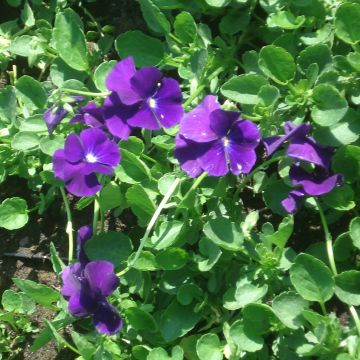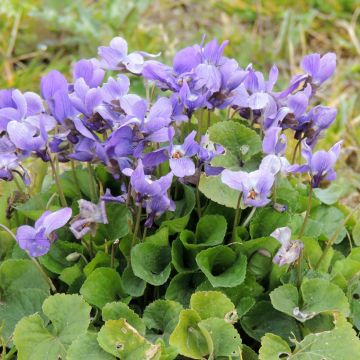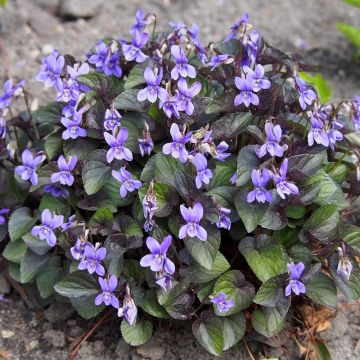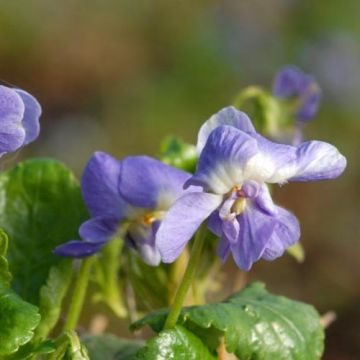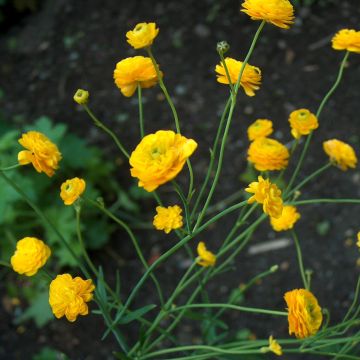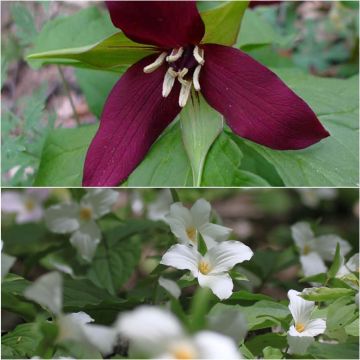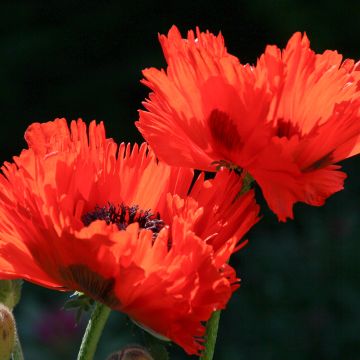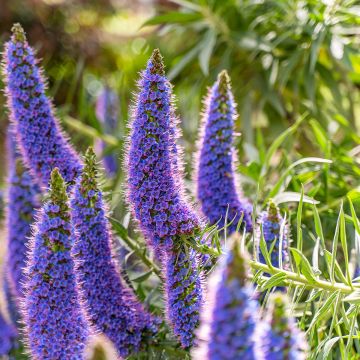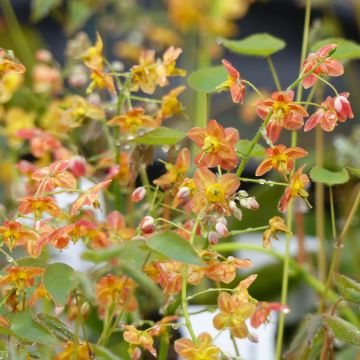

Violette corse, Pensée de Corse - Viola corsica


Violette corse, Pensée de Corse - Viola corsica


Violette corse, Pensée de Corse - Viola corsica
Viola corsica
Viola corsica
Corsican violet
Why not try an alternative variety in stock?
View all →This plant carries a 12 months recovery warranty
More information
We guarantee the quality of our plants for a full growing cycle, and will replace at our expense any plant that fails to recover under normal climatic and planting conditions.
From €5.90 for pickup delivery and €6.90 for home delivery
Express home delivery from €8.90.

Does this plant fit my garden?
Set up your Plantfit profile →
Description
Viola corsica, as its name suggests, is a wild violet endemic to Corsica. On the Island of Beauty, clinging to the peaks at an altitude of 1200m (3937ft), it forms very flowery cushions in spring and summer, with a bright blue-violet colour. The foliage of this Corsican pansy persists in winter and its large, refined-coloured flowers bloom abundantly for over a month. Adapted to cold as well as very dry summers, it will thrive in a sunny rockery, and of course in a dry or alpine garden where it will easily self-seed. It is also a lovely plant to adorn the base of shrubs or climbing plants grown in pots.
Viola corsica is a small perennial of the Violaceae family. The plant slowly covers the ground with rounded tufts composed of bright green, slightly shiny, dentate-edged leaves. The plant forms small colonies through spontaneous sowing. The foliage is evergreen in winter. The flowering of this wild pansy takes place from May to July depending on the climate, for over a month. It will last longer if the soil remains moist until summer. Tufts of leaves emerge from 18cm (7in) peduncles, each bearing a flower. Each flower is formed of 5 violet-blue coloured petals, four of which are directed upwards and one downwards. The larger lower petal has a beautiful white area veined with dark violet. The flowers of the Viola corsica are slightly scented and edible.
The Corsican violet will thrive almost anywhere as long as it is planted in well-drained soil and not too shaded. It is used to adorn the base of trees and shrubs, in mass borders, along paths or in rockeries where it often self-seeds. For example, associate it with primroses, small spring bulbs, aubrietas, and gold baskets (Alyssum montanum or saxatile). It can also be grown in pots or containers to be placed on the window sill or terrace, with regular watering.
Violets and pansies belong to the genus Viola. How to differentiate a violet from a pansy? By the arrangement of their petals: the former has two upright petals and three petals facing downwards, while the latter has four upright petals, with the fifth, larger than the others, bending its head. Violets are almost all native to temperate regions of the globe. The majority of them are perennial, but hybrids with large flowers are sold and used as annual plants.
Report an error about the product description
Viola corsica in pictures




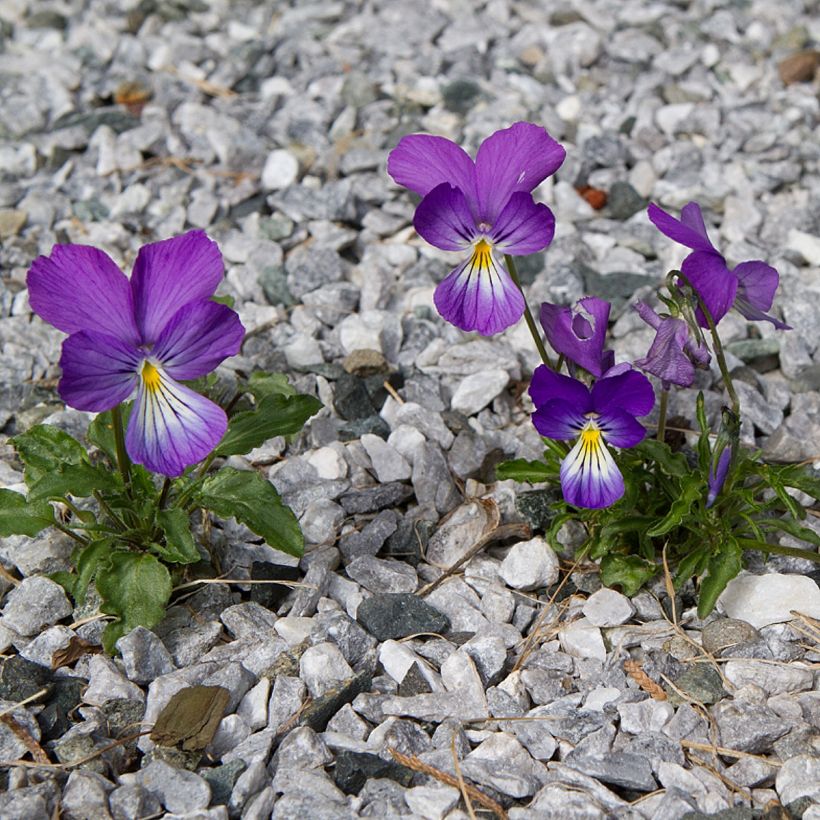

Flowering
Foliage
Plant habit
Botanical data
Viola
corsica
Violaceae
Corsican violet
Mediterranean
Other Viola - Violets
Planting and care
Easy to grow in full sun or partial shade in a very well-drained soil, even rocky and dry in summer. Growing on a slope, in an elevated bed enriched with gravel, gives good results, as does rock gardening. The flowering will last longer if the soil remains slightly moist until summer. Water regularly in the first year, but without excess. This violet tolerates cold and drought very well once established. However, it fears competition from other plants. In pots, water regularly throughout the growing season.
Planting period
Intended location
Care
-
, onOrder confirmed
Reply from on Promesse de fleurs
Spring flowering perennials
Haven't found what you were looking for?
Hardiness is the lowest winter temperature a plant can endure without suffering serious damage or even dying. However, hardiness is affected by location (a sheltered area, such as a patio), protection (winter cover) and soil type (hardiness is improved by well-drained soil).

Photo Sharing Terms & Conditions
In order to encourage gardeners to interact and share their experiences, Promesse de fleurs offers various media enabling content to be uploaded onto its Site - in particular via the ‘Photo sharing’ module.
The User agrees to refrain from:
- Posting any content that is illegal, prejudicial, insulting, racist, inciteful to hatred, revisionist, contrary to public decency, that infringes on privacy or on the privacy rights of third parties, in particular the publicity rights of persons and goods, intellectual property rights, or the right to privacy.
- Submitting content on behalf of a third party;
- Impersonate the identity of a third party and/or publish any personal information about a third party;
In general, the User undertakes to refrain from any unethical behaviour.
All Content (in particular text, comments, files, images, photos, videos, creative works, etc.), which may be subject to property or intellectual property rights, image or other private rights, shall remain the property of the User, subject to the limited rights granted by the terms of the licence granted by Promesse de fleurs as stated below. Users are at liberty to publish or not to publish such Content on the Site, notably via the ‘Photo Sharing’ facility, and accept that this Content shall be made public and freely accessible, notably on the Internet.
Users further acknowledge, undertake to have ,and guarantee that they hold all necessary rights and permissions to publish such material on the Site, in particular with regard to the legislation in force pertaining to any privacy, property, intellectual property, image, or contractual rights, or rights of any other nature. By publishing such Content on the Site, Users acknowledge accepting full liability as publishers of the Content within the meaning of the law, and grant Promesse de fleurs, free of charge, an inclusive, worldwide licence for the said Content for the entire duration of its publication, including all reproduction, representation, up/downloading, displaying, performing, transmission, and storage rights.
Users also grant permission for their name to be linked to the Content and accept that this link may not always be made available.
By engaging in posting material, Users consent to their Content becoming automatically accessible on the Internet, in particular on other sites and/or blogs and/or web pages of the Promesse de fleurs site, including in particular social pages and the Promesse de fleurs catalogue.
Users may secure the removal of entrusted content free of charge by issuing a simple request via our contact form.
The flowering period indicated on our website applies to countries and regions located in USDA zone 8 (France, the United Kingdom, Ireland, the Netherlands, etc.)
It will vary according to where you live:
- In zones 9 to 10 (Italy, Spain, Greece, etc.), flowering will occur about 2 to 4 weeks earlier.
- In zones 6 to 7 (Germany, Poland, Slovenia, and lower mountainous regions), flowering will be delayed by 2 to 3 weeks.
- In zone 5 (Central Europe, Scandinavia), blooming will be delayed by 3 to 5 weeks.
In temperate climates, pruning of spring-flowering shrubs (forsythia, spireas, etc.) should be done just after flowering.
Pruning of summer-flowering shrubs (Indian Lilac, Perovskia, etc.) can be done in winter or spring.
In cold regions as well as with frost-sensitive plants, avoid pruning too early when severe frosts may still occur.
The planting period indicated on our website applies to countries and regions located in USDA zone 8 (France, United Kingdom, Ireland, Netherlands).
It will vary according to where you live:
- In Mediterranean zones (Marseille, Madrid, Milan, etc.), autumn and winter are the best planting periods.
- In continental zones (Strasbourg, Munich, Vienna, etc.), delay planting by 2 to 3 weeks in spring and bring it forward by 2 to 4 weeks in autumn.
- In mountainous regions (the Alps, Pyrenees, Carpathians, etc.), it is best to plant in late spring (May-June) or late summer (August-September).
The harvesting period indicated on our website applies to countries and regions in USDA zone 8 (France, England, Ireland, the Netherlands).
In colder areas (Scandinavia, Poland, Austria...) fruit and vegetable harvests are likely to be delayed by 3-4 weeks.
In warmer areas (Italy, Spain, Greece, etc.), harvesting will probably take place earlier, depending on weather conditions.
The sowing periods indicated on our website apply to countries and regions within USDA Zone 8 (France, UK, Ireland, Netherlands).
In colder areas (Scandinavia, Poland, Austria...), delay any outdoor sowing by 3-4 weeks, or sow under glass.
In warmer climes (Italy, Spain, Greece, etc.), bring outdoor sowing forward by a few weeks.


































